Inside the grisly birth of Jaws: ‘It’s a novel about a fish, who cares?’
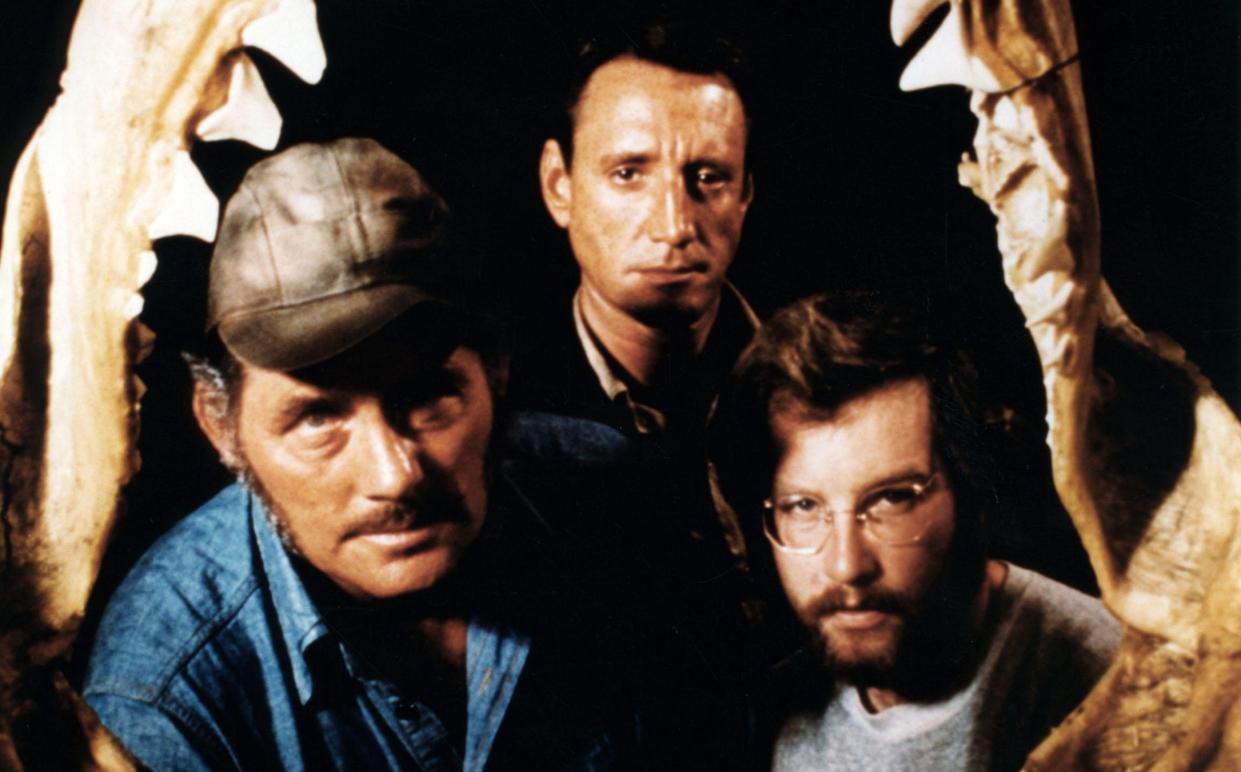
Jaws, perhaps the most famous four-letter title in literary and movie history, was, according to Doubleday editor Thomas E. Congdon, “the 237th name” proposed for Peter Benchley’s sensational debut novel about a series of shark attacks in the fictional Long Island beach town of Amity.
Benchley’s first suggestion was A Stillness in the Water. Among other titles proposed by Congdon were The Terror of the Monster, The Summer of the Shark, The Year They Closed the Beaches and Why Us? Author Nathaniel Benchley laughingly proposed that his son call his ocean thriller Who’s That Noshin’ On My Laig? Finally, when Congdon proposed The Jaws of the Leviathan, Benchley said, “The only word we both like is ‘jaws.’ Why don’t we call the bloody thing Jaws?”
Peter Bradford Benchley, who was born on May 8 1940, had been intrigued by sharks ever since his father had taken him angling in the waters off Nantucket as a child. They landed very few swordfish but plenty of sharks. “The water was lousy with sharks. I’d take them home and cut the jaws out and be left with 150 pounds of rotting meat on the lawn. I was struck by the inherent menace of prehistoric eating machines,” Benchley told the New York Times in 1974.
Benchley was born to be a writer – his grandfather Robert was the drama editor of The New Yorker – and after graduating in English at Harvard, he travelled Europe and in 1964 published a memoir about his gap year called Time and a Ticket. After six months reserve duty in the Marine Corps, he began working as a freelance journalist – including writing short obituaries for The Washington Post – his biggest disappointment being that The New Yorker rejected 50 of his 52 submissions.
In 1964, Benchley read a local news story about a fisherman who caught a 4,500-pound great white shark off Long Island. He stored the idea for later use, believing he could make something of it because “everyone in the world was fascinated with either sharks or dinosaurs” and that humans “love our monsters”. Over the years, he chewed away on a story about one of those great white sharks that “came around and wouldn’t go away”.
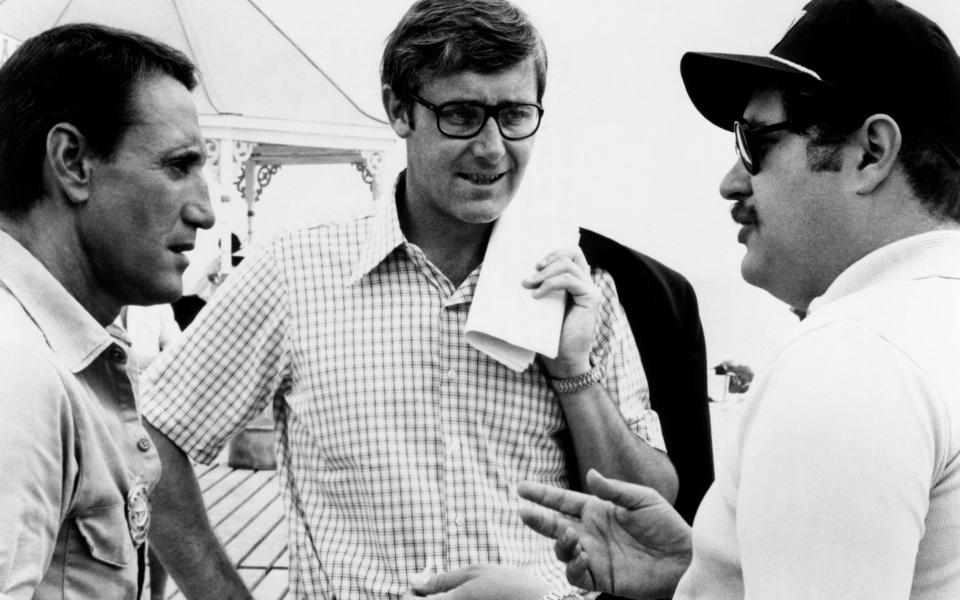
It took another eight years for the book to come to fruition. In the meantime, he worked in television and, from 1967 until January 1969, was employed as a speechwriter for President Lyndon Johnson. “I was a low‐level aide,” he recalled, “but it was a chance to see the inside of the White House.” Benchley rarely talked about his contributions to speeches about the Vietnam War, but he did recall writing Johnson’s 1967 proclamation for a National Day of Prayer (joking that he was telling the public, “on your knees, America”).
He said that Johnson would sometimes complain about “chicken-sh-t writers” filling speeches with names he couldn’t pronounce. “Depending on his mood, he would know your name or he would forget it – but he always knew my wife’s name. God, he was a good politician,” added Benchley. He was not retained by Richard Nixon, a man he dubbed “Old Lumpjaw”. In 1986, Benchley satirised some of his White House experiences in a comic novel called Q-Clearance, featuring an anxiety-ridden presidential speechwriter called Timothy Burnham who unwittingly becomes the target of Soviet spies.
In 1971, when he was back freelancing, Benchley met Congdon for lunch to suggest a non-fiction book about pirates. When Congdon asked, “have you ever thought about fiction?”, Benchley said: “I’ve been thinking about a novel about a great white shark that appears off a Long Island resort and afflicts it.” After Benchley’s agent Roberta Pryor sent Congdon a one-page summary, Doubleday bought the rights for $1,000 and Benchley spent the winter of 1971 and spring of 1972 writing the first chapters, working in a rented room over the Pennington Furnace Supply Co. in Pennington, New Jersey, and later in a converted turkey coop in Stonnington, Connecticut. Congdon did substantial editing to tighten up the plot, but was convinced they had a potential hit on their hands.
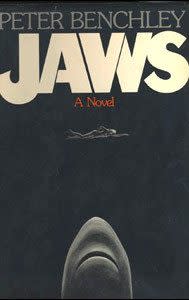
Benchley certainly needed the money. He had only $600 in his bank account when he sold the rights, at a time when the struggling writer and his wife Wendy, a waitress from Nantucket, had three young children – Tracy, Christopher and Clayton. Unlike Congdon, the author had no expectations of a bestseller, and scoffed at his brother‐in‐law’s question: “Can you make money off a novel?”. Benchley later said: “I knew that Jaws couldn’t possibly be successful. It was a first novel, and nobody reads first novels. It was a first novel about a fish, so who cares?”
The author was playing down the ‘fish’ he had created, a fantastic, terrifyingly deadly 25-foot beast, who terrorised a community. The accounts of the shark eating humans alive in Jaws were graphic and unflinching. When a young woman swimmer was torn apart, Benchley described how the shark snapped its jaws around her torso, “crushing bones and flesh and organs into a jelly… with the woman’s body in its mouth, the shark smashed down on the water with a thunderous splash, spewing foam and blood and phosphorescence in a gaudy shower.” When a young boy was snatched and eaten from a raft, “his legs were severed at the hips, and they sank, spinning slowly, to the bottom”.
The shark-hunter Quint (memorably played in Steven Spielberg’s film adaptation by Robert Shaw) was partly based on Frank Mundus, a Montauk-based charter captain who killed whales for chum and harpooned sharks, a practice now outlawed. Amity Police chief Martin Brody (played by Roy Scheider) and his wife Ellen (Lorraine Gary) were also vastly different in the book to their screen versions. In the novel, they are a bickering couple, very unlike the lovebirds portrayed in the movie.
Brody has a cruel streak, describing his wife as “corpse-like” in bed. In Benchley’s fiction, Ellen has an affair with the marine biologist Matt Hooper (Richard Dreyfus), who comes in to help with the hunt for the killer shark. In the book, he is far from the plump, jolly, bearded hero portrayed by Dreyfus; Benchley’s original scientist was tall and tanned, egotistical and swaggering.
“The first thing I told Peter Benchley was I didn’t see any room in this adventure for the affair between Ellen and the ichthyologist,” Spielberg told Vanity Fair in 2023. “That was like a Peyton Place scandal that I didn’t feel had any place in the kind of movie I wanted to make. I was mostly intrigued and swept away by Peter’s enormous storytelling skills in the rest of the novel, with a sea-hunt survivors adventure. That’s what I wanted to focus on – and I wanted to get there without having to deal with the nonessential peccadilloes going on in a town without pity.”
Despite Benchley’s mollifying public remarks about having “no problem about the changes… I understood what they had to take out”, there were some tetchy moments between Spielberg and the author. The director was unimpressed with elements of Benchley’s initial screenplay and brought in playwright Howard Sackler for a rewrite. When that didn’t work out, Spielberg hired Carl Gottlieb (who is credited) to revamp Benchley’s script.
In 2015, Gottlieb told the LA Times that Benchley’s screenplay had been an example of a “journalist who didn’t understand screenplays,” and that Spielberg had “sent him a copy of the script with the word ‘eviscerate’ scrawled across the title page.” Gottlieb reportedly chopped dialogue about the social tensions between the rich and the poor in New England and revised some plot elements.
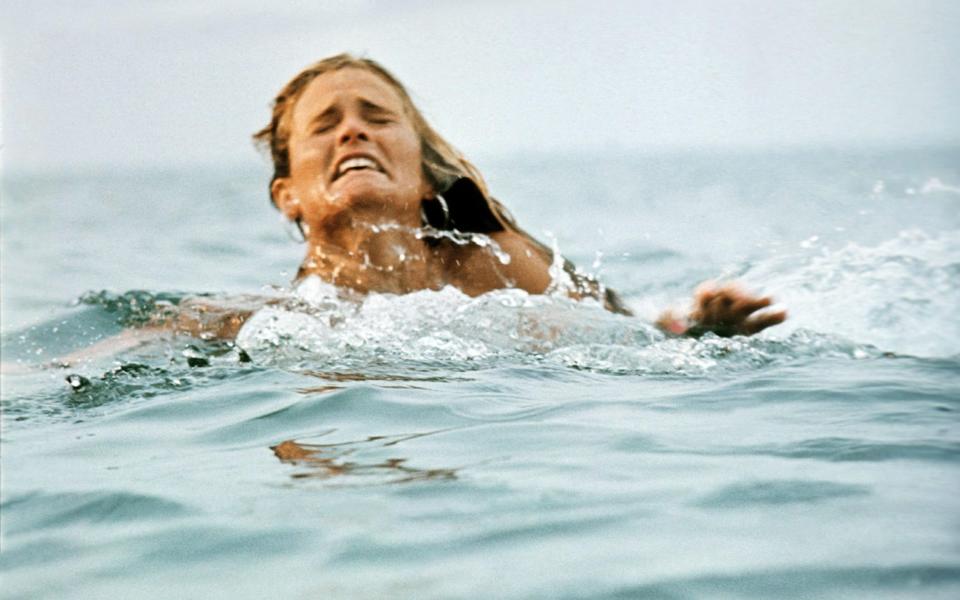
Hooper is allowed to live in the movie, for example, even though he was killed in the shark cage in a key scene in the novel. In addition, Mayor Larry Vaughn, the man once praised by Boris Johnson as “the real hero of Jaws” for keeping the beaches open for tourists despite evidence that a massive shark was eating the townsfolk, had mafia links in Benchley’s original novel. His “keep the beaches open” policy was driven by greed: he and mob bosses had shares in sea-front rental houses.
Benchley was able to separate the novel from the film and by the time movie contracts were exchanged, he knew his financial future was secure. Bantam offered $575,009 for the paperback rights to Jaws and in the weeks leading up to the February 1 1964 publication, there were intense discussions within Doubleday about the cover design. Art director Alexander Gotfryd initially commissioned Wendell Minor to illustrate Benchley’s own idea for the jacket: “to show a peaceful unsuspecting town through the bleached jaws of a shark”.
In an article in The New York Times (two months after publication), reporter Ted Morgan revealed that this idea was ditched because sales executives thought that cover image would make potential buyers think of Freud’s dread fantasy of “vagina dentata” (teeth in the vagina). A subsequent idea, of having just the word ‘Jaws’ with no illustration, was rejected by Bantam chief Oscar Dystel, who said: “Without an image, no one would know what Jaws meant. It could have been a book about dentistry.”
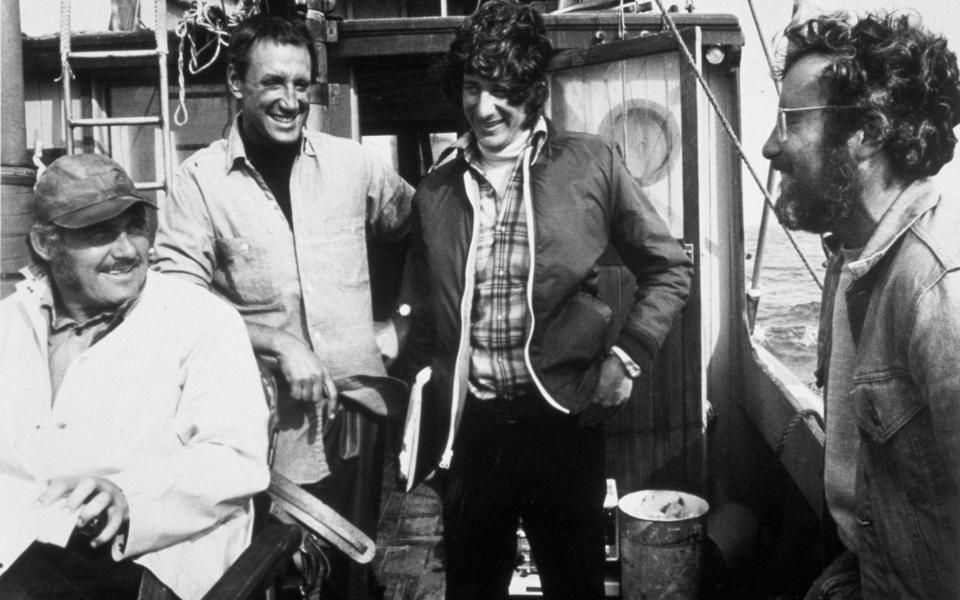
Bantam insisted on an illustration of a shark on the cover. Doubleday called in renowned artist Paul Bacon. Although his first rough layout of the enormous head of a shark zoning in on a youthful swimmer was rejected because it looked too much like “an advancing penis with teeth”, Bacon’s revised version, featuring a more dramatically predatory shark, was so striking that it was also used as the image on the iconic movie poster.
When the Jaws novel came out it was an instant hit, selling 5.5 million copies in America by the time the film was released in June 1975. Benchley’s book stayed on the bestseller list for 44 weeks, and ended up selling more than 20 million copies, making it one of the most successful debut novels of all time. “People think today that a movie makes a summer book, but it was exactly the opposite with Jaws,” said Samuel Vaughan, Doubleday’s president in 1974. “This was a book that set the marketing pace, and Hollywood followed.”
Although Benchley tried to maintain some normality in his life (keeping up his love of social tennis, changing the home telephone to an unlisted number), the new-found wealth changed his life “in every way”, even more so when Spielberg’s movie became a No1 box office hit, grossing more than $88 million worldwide. Despite its blockbuster success – the movie made the phrase “just when you thought it was safe to go back into the water” part of popular language – Benchley said he did not allow his children to see the film (with its scary “primal score” from John Williams) “because they enjoy the water too much”.
The 26-year-old Spielberg was told by producers Richard Zanuck and David Brown that Dick Richards had been their first choice as director but that he had annoyed Benchley by constantly referring to the great white shark as “the white whale”. “Peter became very disinterested in having his shark called a whale. And that’s how the project finally came to me,” Spielberg admitted. Perhaps it jarred with Benchley because he knew that he been influenced by Herman Melville’s Moby Dick in creating his own ominous, violent and seemingly supernaturally invincible sea creature.
Although Benchley was aware of production problems – Spielberg admitted that a malfunctioning mechanical shark, seasickness among the crew and constant delays made for a “living nightmare” on set – the author enjoyed his visits to the shoot in Martha’s Vineyard, even taking a small cameo role as a reporter. He noted with interest that lifeguards had spotted real great whites in the location beaches during filming. Although he etched a visceral fear of being eaten or maimed by sharks into the popular consciousness, Benchley himself was more worried by the prospect of flying, something he dreaded, to American cities as part of a nationwide promotional tour.
Jaws made Benchley a household name and he continued to write (although having nothing to do with the dire Jaws sequels that followed Spielberg’s blockbuster), crafting his most significant post-Jaws success with The Deep, an adventure story about lost treasure and shipwrecks off Bermuda. Benchley co-wrote the screenplay for the 1977 screen adaptation that starred Robert Shaw, Jacqueline Bisset and Nick Nolte.
His lifelong love of the ocean also found expression in The Girl of the Sea of Cortez, a 1982 novel about an intrepid young woman who forms a bond with a manta ray, and Beast, a 1991 thriller about a giant squid that starts attacking humans. Benchley wrote eight novels in all, perhaps the most unusual of which was 1989’s Rummies, about the residents of an alcohol recovery clinic run by a celebrity called Stone Banner.
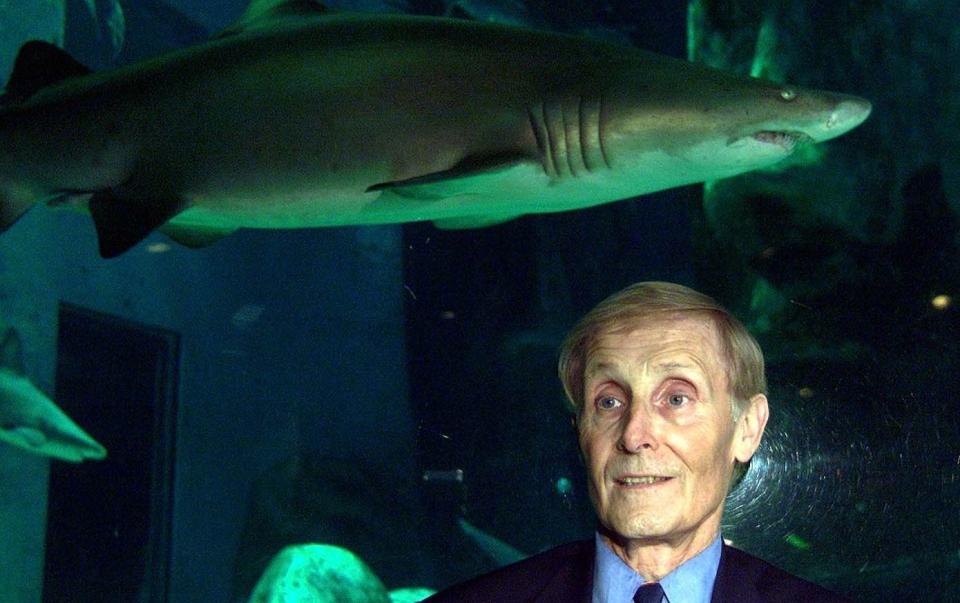
One emotion that united Spielberg and Benchley late in life was a deep regret over the impact of Jaws on the global shark population. “I truly, and to this day, regret the decimation of the shark population because of the book and the film. I really, truly regret that,” Spielberg told BBC’s Desert Island Discs in 2022.
Benchley became active in the marine conservation world, campaigning about the threat of hunters to the vulnerable shark population. In a 2000 interview with the Animal Attack Files, Benchley said, “What I now know, which wasn’t known when I wrote Jaws, is that there is no such thing as a rogue shark which develops a taste for human flesh.” A week before his death, Benchley told a UK newspaper: “I could never write Jaws today. Sharks don’t target human beings, and they certainly don’t hold grudges.”
Benchley died aged 65, from pulmonary fibrosis, on February 11 2006. He was posthumously honoured by the Shark Research Institute, who inaugurated The Peter Benchley Shark Conservation Awards. His widow Wendy, who turns 83 in February 2024, carried on his environmental campaigning and has sanctioned the publication of Quint, a Jaws prequel by Robert Lautner,
Despite his reservations about Jaws, Benchley will be remembered forever for fostering a unique kind of mass terror: of the predator shark. Although Wendy remained proud of her husband’s novel (and Spielberg’s “superb movie”), she was at pains to point out that it was just a story, reminding the Associated Press in 2006: “Peter kept telling people the book was fiction, it was a novel,” and that he no more took responsibility for the fear of sharks than Mario Puzo took responsibility for the Mafia.


